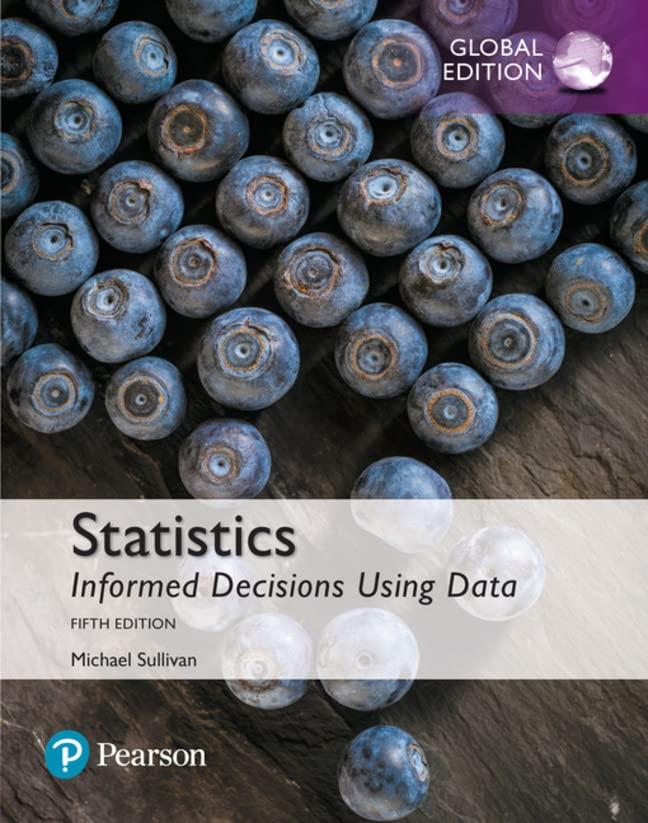According to the U.S. Department of Agriculture (USDA), (48.9 %) of males aged 20 to 39 years
Question:
According to the U.S. Department of Agriculture (USDA), \(48.9 \%\) of males aged 20 to 39 years consume the recommended daily requirement of calcium. After an aggressive "Got Milk" advertising campaign, the USDA conducts a survey of 35 randomly selected males aged 20 to 39 and finds that 21 of them consume the recommended daily allowance (RDA) of calcium. At the \(\alpha=0.10\) level of significance, is there evidence to conclude that the percentage of males aged 20 to 39 who consume the RDA of calcium has increased?
Approach We use the following steps:
Step 1 Determine the null and alternative hypotheses.
Step 2 Check whether \(n p_{0}\left(1-p_{0}\right)\) is greater than or equal to 10 , where \(p_{0}\) is the proportion stated in the null hypothesis. If it is, then the sampling distribution of \(\hat{p}\) is approximately normal and we can use the steps on page 512. Otherwise, we use Steps 3 and 4 , presented next.
Step 3 Compute the \(P\)-value. For right-tailed tests, the \(P\)-value is the probability of obtaining \(x\) or more successes. For left-tailed tests, the \(P\)-value is the probability of obtaining \(x\) or fewer successes.* The \(P\)-value is always computed with the proportion given in the null hypothesis. Remember, assume that the null is true until we have evidence to the contrary.
Step 4 If the \(P\)-value is less than the level of significance, \(\alpha\), reject the null hypothesis.
Step by Step Answer:

Statistics Informed Decisions Using Data
ISBN: 9781292157115
5th Global Edition
Authors: Michael Sullivan





